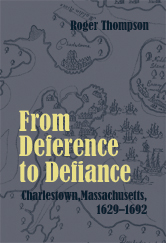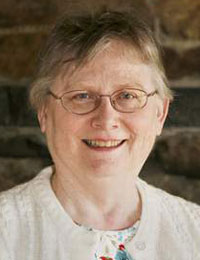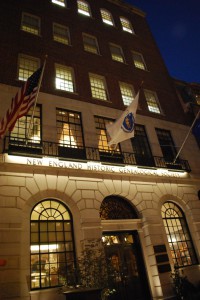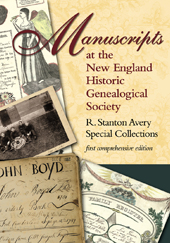 Why most people went to Charlestown during the seventeenth century we can only guess. Individuals were usually far too occupied during preparation, emigration, and plantation to record their reasons for undertaking this life-threatening ordeal. We can only adduce possible factors from the heart-searchings of such (hardly typical) emigrants as Governor Winthrop, and from the prevailing conditions in emigrant areas of England. Continue reading Why They Came
Why most people went to Charlestown during the seventeenth century we can only guess. Individuals were usually far too occupied during preparation, emigration, and plantation to record their reasons for undertaking this life-threatening ordeal. We can only adduce possible factors from the heart-searchings of such (hardly typical) emigrants as Governor Winthrop, and from the prevailing conditions in emigrant areas of England. Continue reading Why They Came
Category Archives: Research Methods
Trust in a reputable firm
 I own some shares in mutual funds and have a basic understanding of the stock market, but I am in no way, shape, or form the person you want to talk to about investing your money. When I am trying to figure out how to invest my money, I face the same kind of information overload that a beginning genealogist faces. In both industries there are cautionary tales about not trusting everything that one reads. So who does one trust?
I own some shares in mutual funds and have a basic understanding of the stock market, but I am in no way, shape, or form the person you want to talk to about investing your money. When I am trying to figure out how to invest my money, I face the same kind of information overload that a beginning genealogist faces. In both industries there are cautionary tales about not trusting everything that one reads. So who does one trust?
One piece of universal advice is to trust “reputable firms.” In the case of investments, that might be called an oxymoron, but in genealogy we soon pick up on names of researchers and authors who have good reputations. As human beings, none are perfect, but because of their “best practices” some have gained our trust. Continue reading Trust in a reputable firm
Preparing your genealogical project for publication
 As I prepare for this week’s Writing and Publishing Seminar in Boston, I am reflecting on that challenging moment for genealogists when research gives way to writing. It’s important, at this stage, to begin thinking about the potential article or book as something quite distinct from the research project it has been until now.
As I prepare for this week’s Writing and Publishing Seminar in Boston, I am reflecting on that challenging moment for genealogists when research gives way to writing. It’s important, at this stage, to begin thinking about the potential article or book as something quite distinct from the research project it has been until now.
Research is messy and enthralling; good articles and books may well be enthralling, but they are not . . . messy. Research notes record the thrill of the chase; at times, they can be a forum for reflection. They are not, as a rule, a summary or a reasoned argument. Continue reading Preparing your genealogical project for publication
Early Charlestown companies
 The “Great Migration” of as many as 20,000 people to New England during the 1630s was, in its long-term effects, the most important event in English seventeenth-century history. It has been depicted as a farther-reaching extension of an already mobile English population, though I have argued elsewhere that many emigrants to New England came from long-settled backgrounds. What distinguished the Great Migration was its family nature, as compared to the settling of the Chesapeake or the Caribbean, where individual young men predominated. Moreover, many arrivals in Salem, Charlestown, or Boston were members of “companies” – interrelated clans, or followers of gentlemen or ministers. Continue reading Early Charlestown companies
The “Great Migration” of as many as 20,000 people to New England during the 1630s was, in its long-term effects, the most important event in English seventeenth-century history. It has been depicted as a farther-reaching extension of an already mobile English population, though I have argued elsewhere that many emigrants to New England came from long-settled backgrounds. What distinguished the Great Migration was its family nature, as compared to the settling of the Chesapeake or the Caribbean, where individual young men predominated. Moreover, many arrivals in Salem, Charlestown, or Boston were members of “companies” – interrelated clans, or followers of gentlemen or ministers. Continue reading Early Charlestown companies
Organizing a family reunion: Part Three
 My cousin Connie recently sent me a photo of a young woman and asked me if I thought it might show her grandmother (and my great-great-aunt) Constance Boucher Burch (1887–1977). I’m inclined to think it does, given the provenance as well as the (rather unscientific) fact that this young woman has a family look: in features and coloring she reminds me of my grandmother Pauline Glidden Bell (1903–1968). (Click on images to expand them.) Continue reading Organizing a family reunion: Part Three
My cousin Connie recently sent me a photo of a young woman and asked me if I thought it might show her grandmother (and my great-great-aunt) Constance Boucher Burch (1887–1977). I’m inclined to think it does, given the provenance as well as the (rather unscientific) fact that this young woman has a family look: in features and coloring she reminds me of my grandmother Pauline Glidden Bell (1903–1968). (Click on images to expand them.) Continue reading Organizing a family reunion: Part Three
The Great Migration Study Project: a primer
 It is amazing to realize that the Great Migration Study Project is twenty-five years old. Part of my fifteen seconds of fame is that I was in the room when Great Migration Begins was chosen as the title for the first series of books! It is nice to see how many new researchers are getting a glimpse of the project through Vita Brevis.
It is amazing to realize that the Great Migration Study Project is twenty-five years old. Part of my fifteen seconds of fame is that I was in the room when Great Migration Begins was chosen as the title for the first series of books! It is nice to see how many new researchers are getting a glimpse of the project through Vita Brevis.
Robert Charles Anderson conceived the project as a modern “genealogical dictionary” of settlers who came to New England during the period we call the Great Migration, from 1620 through 1640. The project began as a consolidation and correction of material in print but soon expanded to include original research in New England and Old England. Continue reading The Great Migration Study Project: a primer
A considerable legacy in genealogy
 Samuel Gardner Drake was not a likely candidate to become the author of a multitude of historical works. Born on a farm in Pittsfield, New Hampshire, in 1798, he was not an eager pupil in his youth. “His aversion to school, when a little urchin,” as John H. Sheppard put it, “was particularly strong.” Drake recalled his initial dread of the school room: “My first impressions of that school were anything but pleasant. Being naturally very timid, I was sadly frightened at the stern look of the master. To learn my lessons seemed a desperate undertaking, and it was a long time before I could believe and feel I was not in danger of being annihilated.” Continue reading A considerable legacy in genealogy
Samuel Gardner Drake was not a likely candidate to become the author of a multitude of historical works. Born on a farm in Pittsfield, New Hampshire, in 1798, he was not an eager pupil in his youth. “His aversion to school, when a little urchin,” as John H. Sheppard put it, “was particularly strong.” Drake recalled his initial dread of the school room: “My first impressions of that school were anything but pleasant. Being naturally very timid, I was sadly frightened at the stern look of the master. To learn my lessons seemed a desperate undertaking, and it was a long time before I could believe and feel I was not in danger of being annihilated.” Continue reading A considerable legacy in genealogy
Special collections at NEHGS
 Among the holdings of the New England Historic Genealogical Society is an extensive collection of manuscripts dedicated to genealogical and local history material. Filling more than 5,000 feet of shelving and containing over 28 million individual items (some of which date back to the fourteenth century), this collection, known as the R. Stanton Avery Special Collections, offers members an incredible repository of information.
Among the holdings of the New England Historic Genealogical Society is an extensive collection of manuscripts dedicated to genealogical and local history material. Filling more than 5,000 feet of shelving and containing over 28 million individual items (some of which date back to the fourteenth century), this collection, known as the R. Stanton Avery Special Collections, offers members an incredible repository of information.
Individual entries are arranged by call number, which groups the items according to format: Continue reading Special collections at NEHGS
A sense of place and name
 The question from the previous post was: “What if John Smith and Mary Brown lived in Barnstable but Abigail Smith and Harry Carey were married at Sandwich?” Barnstable and Sandwich are right next to each other, so why would this raise a red flag?
The question from the previous post was: “What if John Smith and Mary Brown lived in Barnstable but Abigail Smith and Harry Carey were married at Sandwich?” Barnstable and Sandwich are right next to each other, so why would this raise a red flag?
Although this example involves an early nineteenth-century wedding (1816), and the rules of posting banns and other restrictions of earlier centuries were becoming less common, in New England towns there was still a strong tie to church and community. Girls married in the church to which their families belonged. John and Mary (Brown) Smith belonged to the church in Barnstable – what would their daughter be doing getting married in Sandwich? Continue reading A sense of place and name
“The Good lord direct us”: a New England love quadrangle, 1648-49
 In December 1648, Lucy (Winthrop) Downing sent her nephew John2 Winthrop a letter full of family news: her husband, Emmanuel Downing, had been at the birth of John’s baby half-brother, Joshua, the week before, and “I belleeue our cosen Dorithe Simonds is nowe wonne and weded to Mr. Harrison the Virginia minister.” Sounding at once like a modern-day gossip and a character in Pride and Prejudice, Mrs. Downing also noted that her daughter Lucy would probably soon marry: Continue reading “The Good lord direct us”: a New England love quadrangle, 1648-49
In December 1648, Lucy (Winthrop) Downing sent her nephew John2 Winthrop a letter full of family news: her husband, Emmanuel Downing, had been at the birth of John’s baby half-brother, Joshua, the week before, and “I belleeue our cosen Dorithe Simonds is nowe wonne and weded to Mr. Harrison the Virginia minister.” Sounding at once like a modern-day gossip and a character in Pride and Prejudice, Mrs. Downing also noted that her daughter Lucy would probably soon marry: Continue reading “The Good lord direct us”: a New England love quadrangle, 1648-49